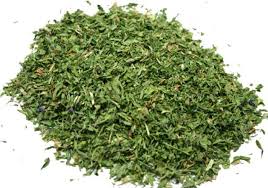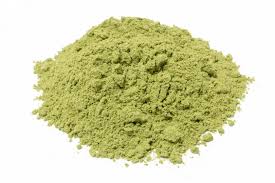TURMERIC ROOT DRIED
Dried Turmeric root is a versatile spice widely used in culinary practices for its vibrant color, earthy flavor, and health benefits. Here are some common culinary uses of turmeric root:
1. Spice Blends and Curries
- Curry Powders: Turmeric is a key ingredient in curry powders, lending its golden hue and subtle earthy bitterness.
- Indian Dishes: It is essential in dishes like dal, biryani, and butter chicken for both flavor and color.
2. Golden Milk (Turmeric Latte)
- Turmeric root is often used to make golden milk, a warm, comforting beverage made with milk, turmeric, and spices like cinnamon and black pepper.
3. Soups and Broths
- Adding turmeric to soups and broths, like lentil soups or bone broths, gives a rich, deep color and adds anti-inflammatory properties.
4. Rice and Grains
- A small amount of turmeric can be added to rice or quinoa while cooking to create a beautiful golden color, such as in turmeric rice.
5. Marinades and Rubs
- Turmeric is used in marinades for meats, especially in Indian and Middle Eastern cuisine. It adds both flavor and acts as a natural preservative.
- It can also be part of dry rubs for grilling, especially for fish or chicken.
6. Pickling
- Turmeric root can be used in making pickles, adding flavor, color, and acting as a natural preservative, especially in Indian achars (pickles).
7. Smoothies and Juices
- Fresh or dried turmeric root can be blended into smoothies or juices for a boost of antioxidants, especially in tropical drinks like mango-turmeric smoothies.
8. Baking
- In baking, turmeric is used to give a natural yellow color to breads, muffins, and savory baked goods like turmeric flatbreads or focaccia.
9. Salads and Dressings
- Fresh turmeric root can be grated into salads or used in homemade dressings, adding a slight peppery flavor and brilliant color.
10. Vegetable Dishes
- Roasted vegetables can be tossed with turmeric to add flavor and a warm, golden color. It’s popular in roasted cauliflower or potato dishes.
Dried Turmeric root is more than a culinary spice—it's a potent ingredient with health benefits, adding both depth of flavor and vibrant color to a wide range of dishes.
what are health benefits
Turmeric root is renowned for its wide range of health benefits, mainly due to its active compound, curcumin, which has strong anti-inflammatory and antioxidant properties. Here are some of the key health benefits of turmeric root:
1. Anti-Inflammatory Properties
- Curcumin is a powerful anti-inflammatory agent. Chronic inflammation contributes to many health conditions, such as heart disease, cancer, and Alzheimer's disease, and turmeric helps to reduce inflammation naturally.
- It may also aid in managing conditions like arthritis and joint pain, offering relief by reducing inflammation in the body.
2. Antioxidant Boost
- Turmeric is a potent antioxidant, which helps neutralize free radicals in the body that can damage cells and contribute to aging and diseases like cancer.
- Antioxidants in turmeric also boost the body’s own antioxidant enzymes, enhancing overall protection.
3. Supports Digestive Health
- Turmeric promotes healthy digestion by stimulating bile production, which aids in the digestion of fats.
- It can help alleviate symptoms of indigestion, bloating, and gas. Some studies suggest turmeric may help relieve irritable bowel syndrome (IBS) symptoms.
4. Heart Health
- Curcumin improves the function of the endothelium, the lining of blood vessels, which helps regulate blood pressure and blood clotting.
- Turmeric may lower the risk of heart disease by reducing inflammation and oxidation, both of which are key contributors to heart problems.
5. Brain Health and Memory
- Turmeric may improve brain function and lower the risk of brain diseases. Curcumin can increase levels of brain-derived neurotrophic factor (BDNF), a growth hormone that functions in the brain.
- This can help delay or reverse diseases like Alzheimer’s and improve cognitive function and memory.
6. Cancer Prevention
- Studies have shown that curcumin can reduce the growth of cancerous cells and inhibit the spread of cancer.
- It may be particularly helpful in preventing cancers of the digestive system, like colon cancer.
7. Boosts Immune System
- Turmeric has been used in traditional medicine to boost immunity. Its anti-inflammatory and antioxidant properties help support the immune system, making it more effective at fighting infections and chronic diseases.
- It is often used to relieve cold and flu symptoms.
8. Supports Liver Health
- Turmeric can detoxify the liver by increasing the production of enzymes that flush out toxins. It helps reduce the damage caused by alcohol, processed foods, and pollutants.
9. Skin Health
- Turmeric’s anti-inflammatory and antioxidant properties make it beneficial for the skin. It can help with acne, eczema, and other skin conditions by reducing redness and irritation.
- It is also used to improve complexion and reduce signs of aging due to its ability to neutralize free radicals.
10. Aids in Weight Loss
- Turmeric may support weight loss by reducing inflammation and regulating metabolism. Some studies suggest that it can help prevent the growth of fat tissues and lower body fat levels.
11. May Improve Mood and Fight Depression
- Some studies have shown that curcumin can be as effective as some antidepressant medications. It works by boosting serotonin and dopamine levels in the brain, both of which are important for regulating mood.
12. Blood Sugar Regulation
- Turmeric can improve insulin sensitivity and help manage blood sugar levels, making it potentially beneficial for people with type 2 diabetes.
13. Wound Healing
- Turmeric has antibacterial and antiseptic properties, which can help heal cuts, burns, and other wounds more quickly.
14. Pain Relief
- Because of its anti-inflammatory properties, turmeric can help reduce pain associated with injuries, arthritis, or surgery.
Incorporating turmeric into your diet or using it as a supplement can provide significant health benefits. However, it's important to note that curcumin is not easily absorbed by the body, so combining turmeric with black pepper (which contains piperine) can help enhance absorption and maximize the benefits.
Is it good to chew Turmeric Root? why?
Chewing fresh turmeric root can be beneficial, but there are some things to consider:
Benefits of Chewing Turmeric Root:
1. Anti-Inflammatory Properties:
Directly consuming turmeric root provides curcumin, which has powerful anti-inflammatory effects. Chewing the root allows the body to absorb curcumin more naturally, potentially helping with inflammation, joint pain, and other inflammatory conditions.
2. Boosts Oral Health:
Turmeric has antibacterial and antimicrobial properties, which can help reduce bacteria in the mouth, fight gum disease, and improve overall oral hygiene. In fact, turmeric is sometimes used in natural toothpaste or mouth rinses for its gum-healing properties.
3. Rich in Antioxidants:
Chewing turmeric gives you a dose of antioxidants, helping to neutralize free radicals in the body and reduce oxidative stress, which is linked to aging and many diseases.
4. Improves Digestion:
Chewing turmeric may stimulate the production of bile, aiding digestion and helping to alleviate digestive issues like bloating or indigestion.
5. Boosts Immune System:
The antimicrobial and anti-inflammatory properties of turmeric may help support your immune system, reducing the risk of infections or illnesses.
6. Supports Skin Health:
Since turmeric is known to benefit the skin, chewing it may help improve skin health from within by fighting inflammation and oxidative damage that can cause acne, redness, or aging.
Challenges of Chewing Turmeric Root:
1. Bitter Taste:
Turmeric has a strong, earthy, and slightly bitter taste, which might be unpleasant for some people when chewed raw.
2. Stains Teeth:
Turmeric is famous for its strong yellow pigment, which can stain your teeth if you chew it regularly. If you’re concerned about staining, it’s a good idea to rinse your mouth or brush your teeth after chewing turmeric.
3. Low Absorption of Curcumin:
Curcumin, the active compound in turmeric, is not very well absorbed by the body on its own. To increase absorption, it’s recommended to combine turmeric with black pepper (which contains piperine) or consume it with healthy fats like coconut oil or ghee.
4. Possible Digestive Issues:
For some people, raw turmeric can cause mild digestive discomfort, especially in large amounts. If you're prone to digestive issues, it's best to start with small amounts.
How to Chew Dried Turmeric Root Properly:
- Small Amounts: Start with small pieces, as the flavor is strong and the effect on digestion should be gauged.
- With Black Pepper: To maximize curcumin absorption, chew a small amount of black pepper or pair turmeric with a meal containing fat.
- Rinse After Chewing: To prevent tooth staining, rinse your mouth or brush your teeth after chewing.
Chewing dried turmeric root can be a natural way to enjoy its health benefits, especially for anti-inflammation and boosting oral health. However, it’s important to be mindful of its strong taste and potential to stain teeth. Additionally, for better curcumin absorption, consider consuming it with black pepper or fats.
























